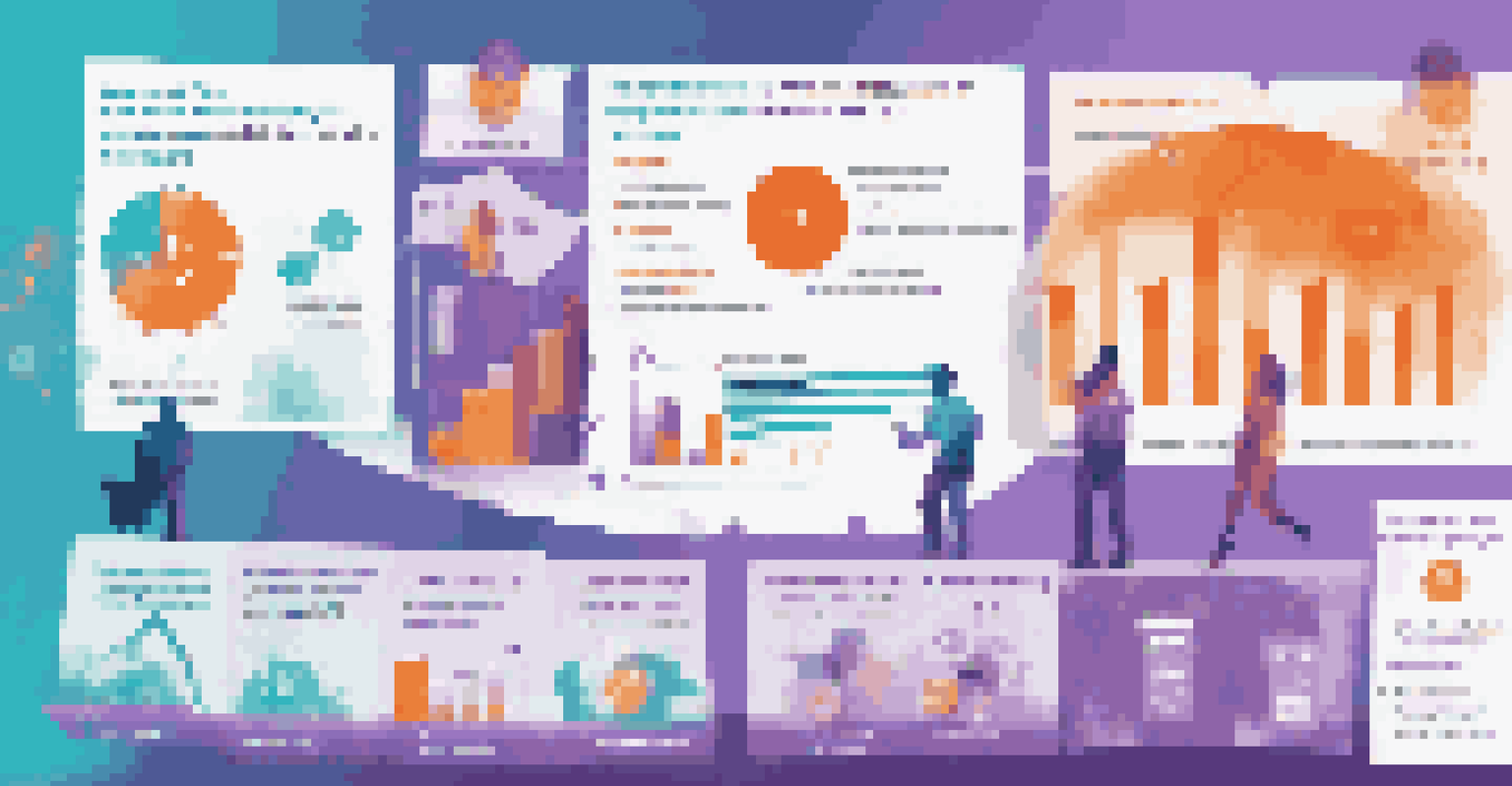Personalization Strategies for B2B Marketing Success

Understanding the Importance of Personalization in B2B
Personalization in B2B marketing is not just a trend; it's a necessity. As businesses strive to connect with their audiences, tailoring messages to specific needs enhances engagement. This practice helps build trust, showcasing that you understand your clients’ challenges and goals.
Personalization is about more than just a name in an email; it's about understanding your audience's needs and delivering relevant content that resonates.
Imagine receiving an email that addresses your company by name and discusses your unique pain points—it's much more compelling than a generic message. Personalization allows businesses to stand out in a crowded marketplace by delivering relevant content that resonates with their audience.
In today's competitive landscape, effective personalization can lead to increased customer loyalty and higher conversion rates. By understanding the importance of personalization, B2B marketers can create more meaningful connections, ultimately driving success.
Segmenting Your Audience for Targeted Messaging
Segmentation is a crucial first step in any personalization strategy. By dividing your audience into distinct groups based on criteria such as industry, size, or purchasing behavior, you can tailor your messaging to meet their specific needs. This targeted approach ensures that your communications resonate with the right people.

For example, a software company might segment its audience into small businesses and large enterprises. Each group has different requirements and budget constraints, so the messaging should reflect those differences. This tailored communication increases the likelihood of engagement and conversion.
Personalization Builds Trust
Tailoring messages to specific client needs enhances engagement and fosters trust in B2B marketing.
Moreover, segmentation goes beyond demographics; it also considers behavioral data. Understanding how your audience interacts with your brand allows for even more precise targeting, ensuring that your messages hit home every time.
Leveraging Data for Enhanced Personalization
Data is the backbone of effective personalization strategies. By analyzing customer data, including past purchases, browsing behavior, and engagement metrics, businesses can gain valuable insights into their audience's preferences. This information is instrumental in crafting personalized content that speaks directly to the user.
Data is the new oil, but like oil, it must be refined to be useful. Personalization is that refinement.
Imagine you're a marketing manager who notices a trend in how your clients are engaging with your content. By leveraging this data, you can create targeted campaigns that address specific interests, leading to a more engaged audience. In essence, data turns personalization from a guessing game into a strategic approach.
Furthermore, utilizing tools like CRM systems can help track customer interactions and preferences over time. This continuous flow of information allows businesses to refine their strategies and keep their messaging relevant, ensuring that personalization evolves with customer needs.
Creating Personalized Content That Resonates
Content is king, but personalized content is the emperor. Crafting engaging and relevant material tailored to your audience's needs is vital for a successful B2B marketing strategy. This could mean developing case studies that highlight similar businesses or creating blog posts addressing industry-specific challenges.
For instance, if your audience consists of tech startups, producing content that discusses emerging technologies or funding strategies can be incredibly valuable. By aligning your content with their interests, you position your brand as a trusted resource, fostering stronger connections.
Segment for Precision Targeting
Dividing your audience into specific groups allows for targeted messaging that resonates with their unique requirements.
Additionally, remember that personalization extends to various formats, including emails, social media posts, and landing pages. Each piece of content should reflect the specific needs and preferences of your audience, enhancing the overall user experience.
Utilizing Automation for Scalable Personalization
Automation tools can significantly enhance your personalization efforts, making it easier to scale your strategies. By automating email campaigns or social media posts, you can ensure that your personalized messages reach your audience at the right time. This efficiency allows for more consistent engagement without overwhelming your team.
For instance, consider a scenario where a lead downloads a whitepaper. An automated system can send a follow-up email that references the whitepaper and suggests related content, creating a personalized journey that guides them further down the sales funnel. This not only saves time but also increases the likelihood of conversion.
However, while automation is powerful, it's essential to maintain a human touch. Personalization should feel authentic, so even automated messages should be crafted thoughtfully to resonate with the recipient.
Measuring Success: KPIs for Personalization Efforts
To determine the effectiveness of your personalization strategies, establishing key performance indicators (KPIs) is crucial. Metrics such as engagement rates, conversion rates, and customer retention can provide insights into how well your personalized campaigns are performing. By keeping a close eye on these metrics, you can make data-driven decisions.
For example, if you notice that personalized email campaigns lead to higher open and click-through rates compared to generic ones, you know you're on the right track. This information can help refine future campaigns, focusing on what resonates with your audience.
Data Drives Personalization Success
Leveraging customer data enables businesses to create tailored content, transforming personalization into a strategic advantage.
Additionally, gathering feedback from customers can offer qualitative insights that quantitative metrics may miss. Understanding how your audience feels about your messaging can provide a more comprehensive picture of your personalization success.
Adapting to Feedback for Continuous Improvement
Personalization is not a one-time effort; it requires ongoing adaptation based on feedback and changing market conditions. By regularly assessing your strategies and listening to customer feedback, you can continually refine your approach. This adaptability is key to staying relevant in a fast-paced business environment.
Imagine launching a campaign that initially performs well but begins to lose steam over time. By analyzing customer feedback and engagement metrics, you can identify areas for improvement and adjust your messaging accordingly. This proactive approach ensures that you remain aligned with your audience's needs.

Moreover, embracing a culture of experimentation can lead to innovative personalization strategies. Testing different approaches allows you to discover what resonates best with your audience, ultimately driving better results.